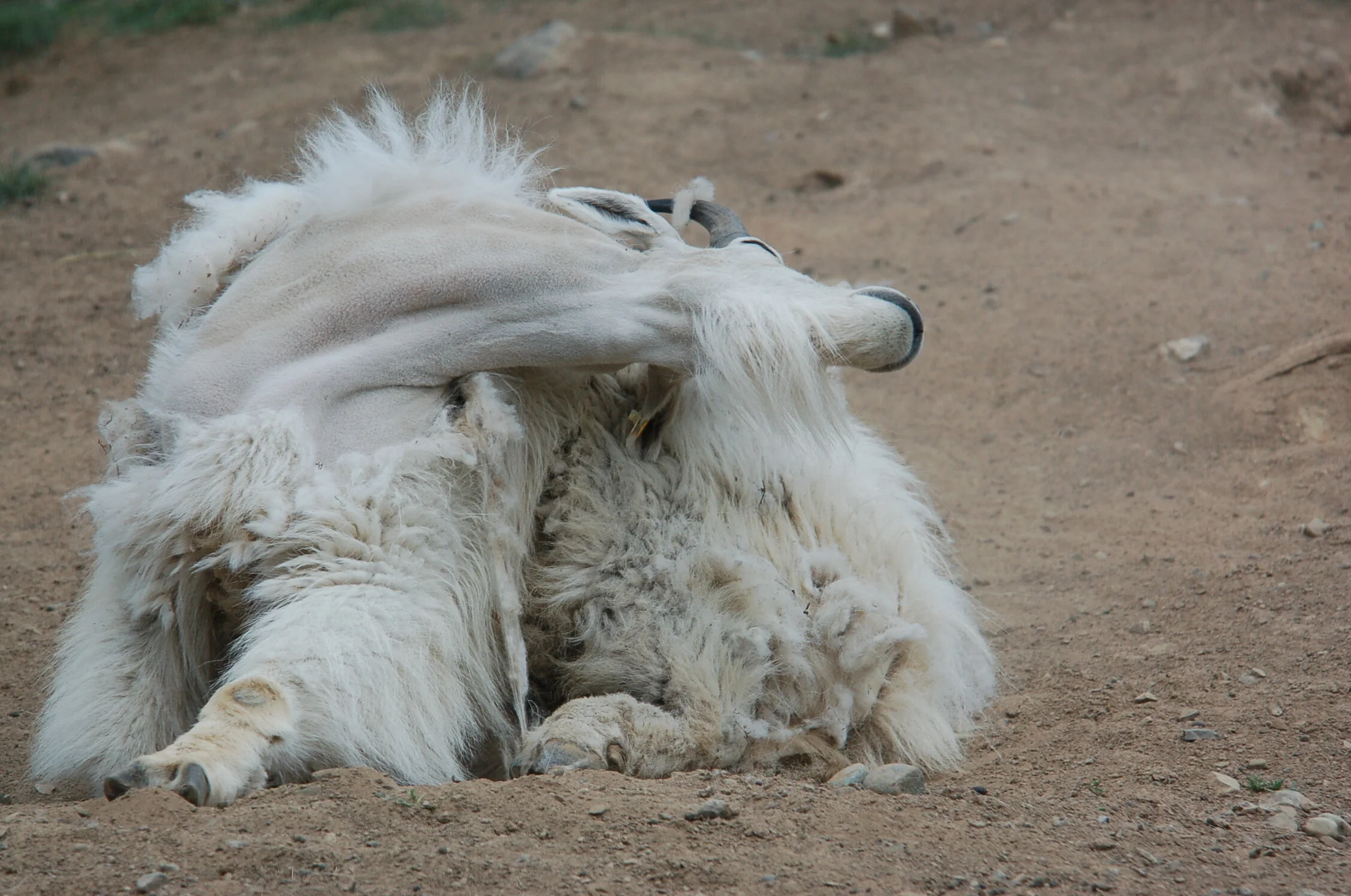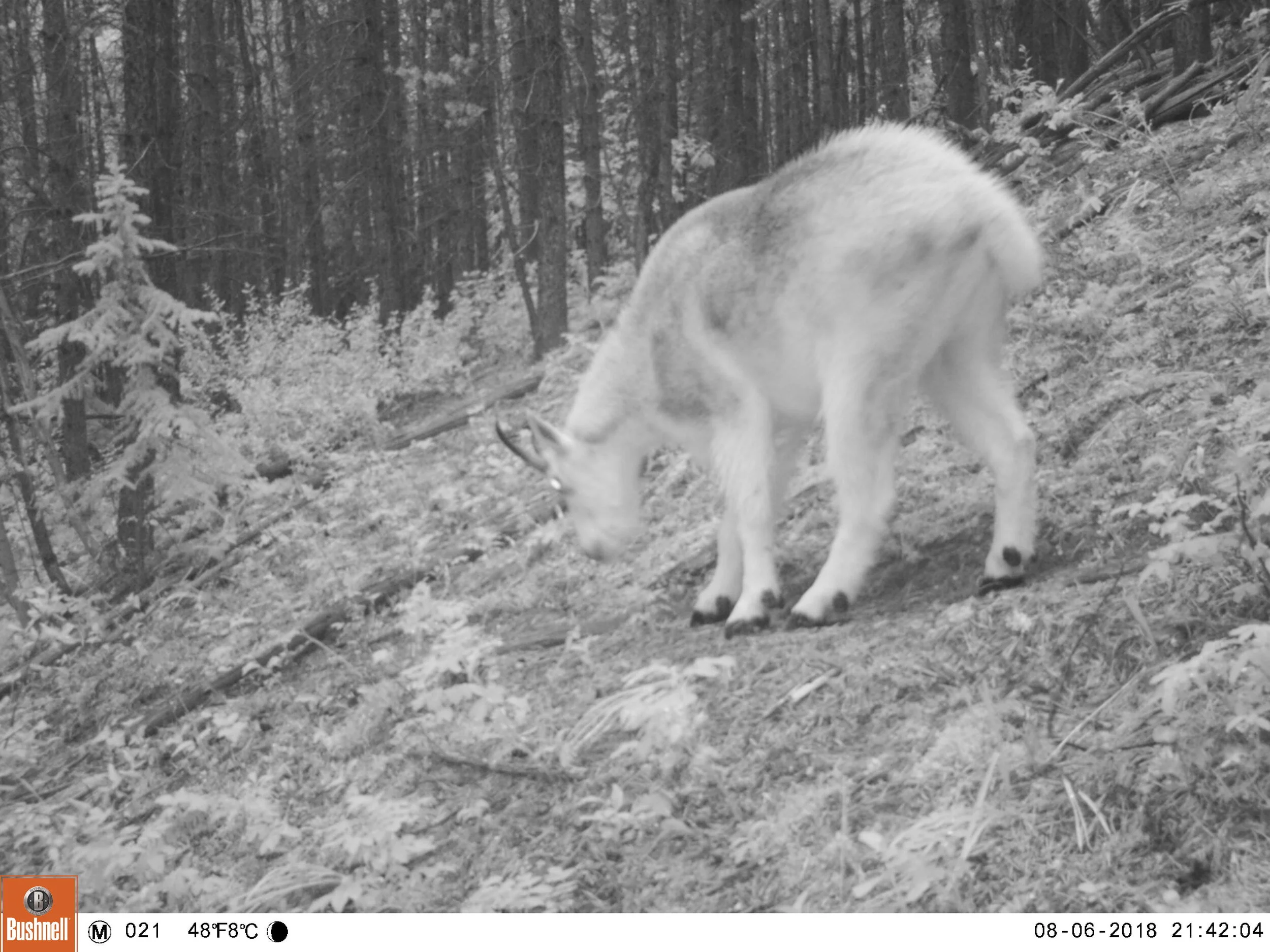What a warming world might mean for mountain goats in winter coats
By Katarzyna Nowak, Safina Center Fellow
Mountain goats are among North America’s most cold-adapted species. Understanding how they are coping with a warming climate is important for conservation managers so that they can better provide for mountain goats’ needs. Mountain goats have thick, two-layered coats that can grow over four inches long in winter and may become a liability in summer. Like most mammals, mountain goats molt their coats, and the patterns and phenology of their coat shedding could help indicate how well they are adapting to climate change.
Adult billy vigorously rubbing his coat on June 8 and shown nearly fully shed by June 27 at the Yukon Wildlife Preserve. Photos: Katarzyna Nowak
In April 2018, through a series of collaborations across multiple institutions including the Yellowstone to Yukon Conservation Initiative and the Wildlife Conservation Society, the “Mountain Goat Molt Project” was initiated to examine the phenology of mountain goats’ winter coat molt in relation to warming. We amassed over 500 photographs of mountain goats from across their range and dating as far back as 1948. Nearly three-quarters of these photos were crowd-sourced from members of the public.
Map courtesy: Katarzyna Nowak
It has however proven challenging to address our main question of if the onset of molt has shifted to earlier in the year in recent years because of our so-far limited sample of old photographs from before the year 2000. According to our analysis to date, there is no evidence for a temporal change in molt.
We have however detected molt differences across mountain goat range. Mountain goats are shedding earlier at higher latitudes (where rate of photoperiod change is more rapid) and later at higher elevations (possible because of temperature lapse rate). Photoperiod or day-length is considered to be the main influence on mammals’ furring mechanisms, but temperature is also thought to play a role.
We have also found pronounced effects of sex and new kids on molt timing with males shedding first and at least two weeks to a month before females, and females with kids shedding last. This finding suggests that nannies with new kids may be the most prone to heat stress in summer.
Our work has not been without challenges. Hand-processing photos has consumed much time and would benefit from Artificial Intelligence (AI) tools; a larger than expected proportion of our remote camera trap photos from the southern Yukon were captured at night and were of too low resolution to process; and sourcing old photographs from archives and personal collections will require more time.
Remote camera trap photo of a fully shed mountain goat on a forest trail at approximately 10 PM in early August in Mount White, southern Yukon. Photo: Katarzyna Nowak
Through this project, we have started to understand mountain goat coat molt better. We hope to keep the project going including to 1) understand how ticks (whose numbers and geographic range are affected by climate change) may affect molt patterns and timing in mountain goats, 2) use additional measures of vegetation green up to understand the roles played by nutrition and body condition in molting, 3) collate what behavioral options mountain goats have for coping with heat, and 4) create citizen science kits for people who come across shed mountain goat hair to collect and submit these samples for measurements (e.g., fiber diameter using a micron test).
Highland species have coarser, thicker hair than lowland species. That we already found an effect of elevation and latitude on hair shedding within a single species across its range lends supports to there being sufficient phenotypic plasticity to allow goats to adapt to warming without necessarily shifting their shedding schedules, and there may be clues to their adaptive potential in the characteristics of their coat fiber in warmer parts of their range.
Another further direction is to talk with traditional weavers who use mountain goat hair about their observed changes in fiber yield, diameter, quality, even color. Mountain goat wool is traditionally used in weaving by the Tlingit Tribe of southeast Alaska (see Rofkar 2014), and indigenous knowledge about mountain goat molt would inform our project going forward.
Read our 2018 project report on CitSci.org, a citizen science web portal, here.





